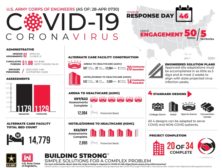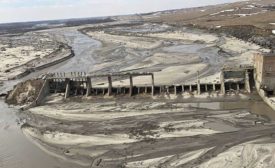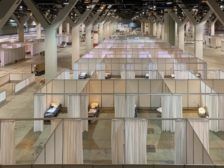Jeff Yoders
ENR Associate Technology, Equipment and Products Editor Jeff Yoders has been writing about design and construction innovations for 20 years. He is a five-time Jesse H. Neal award winner and multiple ASBPE winner for his tech coverage. Jeff previously wrote about construction technology for Structural Engineer, CE News and Building Design + Construction. He also wrote about materials prices, construction procurement and estimation for MetalMiner.com. He lives in Chicago, the birthplace of the skyscraper, where the pace of innovation never leaves him without a story to chase.
ARTICLES
COVID-19 and Construction
As COVID-19 patients are treated in convention centers and arenas, construction can learn from the response
Read More
COVID-19 and Construction
UPDATE: Midwest Stay at Home Orders Extended, Ended and Updated
Michigan construction will reopen May 7
Read More
Spencer Dam Failure Report: Utilities, Owners Must Prepare for Ice Runs
Colder weather, more rain factored in buildup of ice that doomed Northeast Nebraska Dam and Killed a Resident
Read More
COVID-19 and Construction
Army Corps Set to Deliver 28 More COVID-19 Alternate Care Facilities
Agency and FEMA create space for emergency beds even as some governors scale back needs
Read More
Special Report
Latest Midwest Updates on the Coronavirus Pandemic
Tracking developing industry impacts as COVID-19 forces closures and interrupts business across the region
Read More
Design Firm of the Year
Goettsch Partners Named ENR Midwest Design Firm of the Year
The venerable architect's innovative office and residential designs have changed how Chicago looks at its river
Read More
Environment
Communities Prepare as Mississippi River Hits Flood Stage, Spillway Opens in Louisiana
Lack of PPE for flood first responders an issue due to COVID-19 related supply shortages
Read More
COVID-19 and Construction
Walsh Talks About McCormick Convention Center to COVID-19 Care Conversion
First beds were turned over for coronavirus patients April 4, with completion planned April 24
Read More
COVID-19 and Construction
Army Corps Strategy Evolves Into Using Convention Center Spaces for COVID-19 Care
USACE learned from Midwest successes that large spaces could be adapted
Read More
The latest news and information
#1 Source for Construction News, Data, Rankings, Analysis, and Commentary
JOIN ENR UNLIMITEDCopyright ©2024. All Rights Reserved BNP Media.
Design, CMS, Hosting & Web Development :: ePublishing












